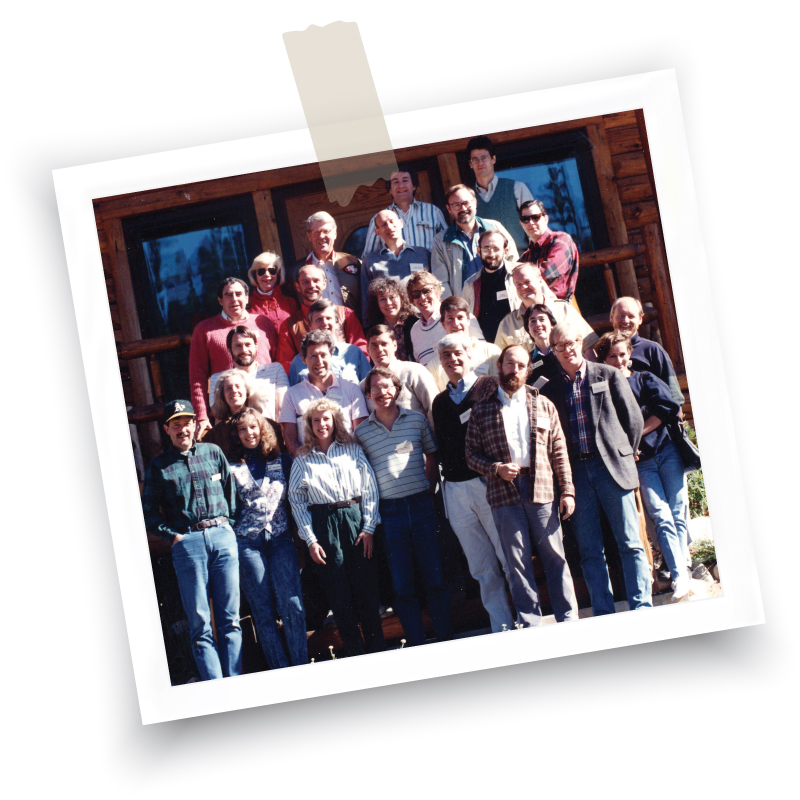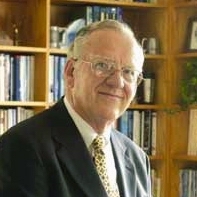In 1980, a small band of economists and political scientists at Montana State University launched a brash new think tank that had the audacity to suggest that economics could shed beneficial light on environmental problems. At the time, environmentalism was riding high, and for many in the green movement, markets were the enemy. Economists who favored markets were not exactly seen in a favorable light, to put it mildly. So just putting the two words—environment and economics—in the same sentence was considered by many to be modern blasphemy.
Then called the Political Economy Research Center and led primarily by Montana State faculty members John Baden, Rick Stroup, and Terry Anderson, PERC, as it was called, became an early rallying place for a handful of economists, political scientists, and legal scholars; a few philosophers; and a scattering of other academics who relished the opportunity to examine environmental issues through a lens that would soon be called free market environmentalism. I had the special privilege of being included in this group. The small band of scholars devoted to free market environmentalism was destined to grow and flourish.
But what we lacked in numbers, we made up for with an enthusiastic dedication for showing that the environment, like any other scarce and valuable resource, could be examined through the lens of economics, and that doing so could yield useful insights into how to enhance or conserve it.
Back then, debates about environmental policy in the larger world focused on ways that markets can fail to provide environmental protection and how to regulate polluters. But at PERC the discourse broadened and recognized how regulation might be designed—or how property rights to environmental resources might be established—so that market forces could help improve how environmental assets were managed and protected. Over time, the relevance of various ideas from PERC scholars began to be recognized, and we started to be included in national policy conversations. Fast forward to today, and PERC has become central to the worldwide discussion about how property rights and incentives can be powerful allies for those who wish to protect and enhance environmental quality.
Competing Viewpoints
In the early 1980s, it did not require a very large room to contain the disciples of free market environmentalism. We even joked that our tribe could meet in a phone booth. But what we lacked in numbers, we made up for with an enthusiastic dedication for showing that the environment, like any other scarce and valuable resource, could be examined through the lens of economics, and that doing so could yield useful insights into how to enhance or conserve it. Specifically, the PERC faithful have always focused on institutions—the formal and informal economic, political, and social rules and customs that govern human behavior. Yes, there was an unrelenting commitment to analyzing environmental issues with economic theory, but PERC’s foundational purpose was to help identify sustainable institutions that would allocate and conserve environmental assets.
With rare exceptions, most academics, policy analysts, politicians, and informed members of the public thought economic institutions such as markets and property rights were anathema to conservation and environmental protection. When facing growing concern about the apparent disregard for wildlife, natural resources, and air and water quality, most people condemned markets and the private pursuit of profits and instead called for stout government control and regulation as the only way to ensure environmental protection and conservation.
Relatedly, powerful voices in the national environmental movement supported more government and often opposed market approaches. Established long before the 1970 Earth Day, American environmental organizations had for years been primarily regional entities. With Earth Day’s revelations, and the establishment of the Environmental Protection Agency in 1970, environmental organizations went national. Highly organized and deeply committed environmentalists gave strong lobbying support for the agency’s expanding role. In doing so, they led meaningful opposition against the use of property rights, economic incentives, and traditional common law as instruments for managing environmental resources. In those early years, PERC scholars were understandably seldom invited to participate in key government-sponsored conferences that addressed natural resource and environmental issues. With the passage of time, and lots of work by PERC scholars, that would change.
The National Debate
In 1991, Terry Anderson and Don Leal published the first edition of Free Market Environmentalism. In language readily accessible by academics, conservationists, and laypeople alike, the book was a collection of case studies about water, fish, timber, and other natural resources that explained how market institutions, sometimes in small community settings, were effectively enhancing environmental quality. Later editions of the book and a growing array of other PERC publications helped lay a strong foundation for bringing economic thought to bear on serious environmental issues.
PERC has played a vital role in putting the words environment and economics in the same sentence.
Soon, PERC launched several major outreach initiatives and educational programs that gave legs to these ideas and helped communicate them to wider audiences. The efforts included a quarterly magazine, programs for public school teachers nationwide, a series of programs that involved journalists and media representatives, research workshops, programs for undergraduate and graduate students, and much more. These contributed mightily to a growing environmental policy conversation that included PERC-inspired content. As a result of these efforts, PERC’s ideas about how property rights, incentives, and legal institutions intersect with environmental quality began to move from the shadows into the spotlight. By the late 1990s, leading environmental organizations such as Environmental Defense Fund and the Nature Conservancy were pushing for the use of marketable permits to manage air pollution and marine fisheries and for expanding the use of property rights to maintain and preserve natural resources.
The tilt toward relevance and acceptance of these ideas accelerated even more in early 2001, when PERC established a six-week long institute on the Montana State University campus for environmental entrepreneurs and other conservation leaders. The Enviropreneur Institute, as it became known, evolved into a summer program that presented practical lectures, field trips, and case studies to promising leaders from environmental organizations, think tanks, and government agencies from around the world. Laying the groundwork for free market environmentalism was an integral part of the program, but applying such concepts to solve specific, tangible environmental problems was the program’s central theme. Through this program and other efforts, PERC became the nation’s leading center for the design and implementation of market solutions to real-world environmental problems.
Decades of Experience
Now, 40 years since its founding, PERC has played a vital role in putting the words environment and economics in the same sentence. PERC’s scholars and associates have also built a veritable library of books, academic studies, articles, and case studies that show how economic considerations can make environmental policy more effective and less costly—from water markets and wildlife recovery to fisheries management and pollution mitigation.
In retrospect, however, I can see that at the beginning we may have failed to appreciate two things. First, the process by which property rights typically develop is a slow and tortuous one. For example, just as markets for land could not exist until land could be measured accurately, which took centuries to evolve, tradable emission permits could not emerge until emissions themselves could be defined, measured, and monitored—a process that is still evolving and advancing today, albeit sometimes slowly.
Second, we did not fully recognize that even when well-identified markets are not present—say, for wolves to live in the Greater Yellowstone Ecosystem—market forces can still come into play, and sometimes in unexpected ways. While there is no formal market where buyers and sellers can exchange protection rights for wolves to roam freely, years ago organizations like Defenders of Wildlife established programs to indemnify ranchers’ livestock losses from wolf depredation to support the species’ existence in the Yellowstone region. Put another way, we had to learn to appreciate the difference between hidden markets and outright markets. As another example, consider the current flurry of activities by managers of large mutual and bond funds that are conditioning their holdings on the basis of corporate environmental enhancement policies. If investors favor such funds more than others, then capital costs will fall for favored firms, and environmental quality will be enhanced. And if investors are not so persuaded, the green funds will shrink in size—all a reflection of hidden markets for environmental quality.
While many PERC studies may focus on theoretical considerations that spring from applying free markets to environmental assets, just as many, if not more, address practical challenges within the context of legislative constraints and policies. And quite often, PERC proposals for improving environmental outcomes are addressed to government agencies themselves, demonstrating how market-based solutions can be encouraged even within the existing confines of regulatory institutions. All the while, after four decades of experience, there is a deep recognition that hidden yet real market forces can be present and functioning even where formal markets do not exist.
And now, today, should one seek to hold a meeting of those who embrace the usefulness of PERC thinking, one will need far more than a phone booth. PERC’s ideas have now spread worldwide. And yet, in another sense, thanks to the work of a new generation of leaders, scholars, and conservationists at PERC, the conversation has just begun.





